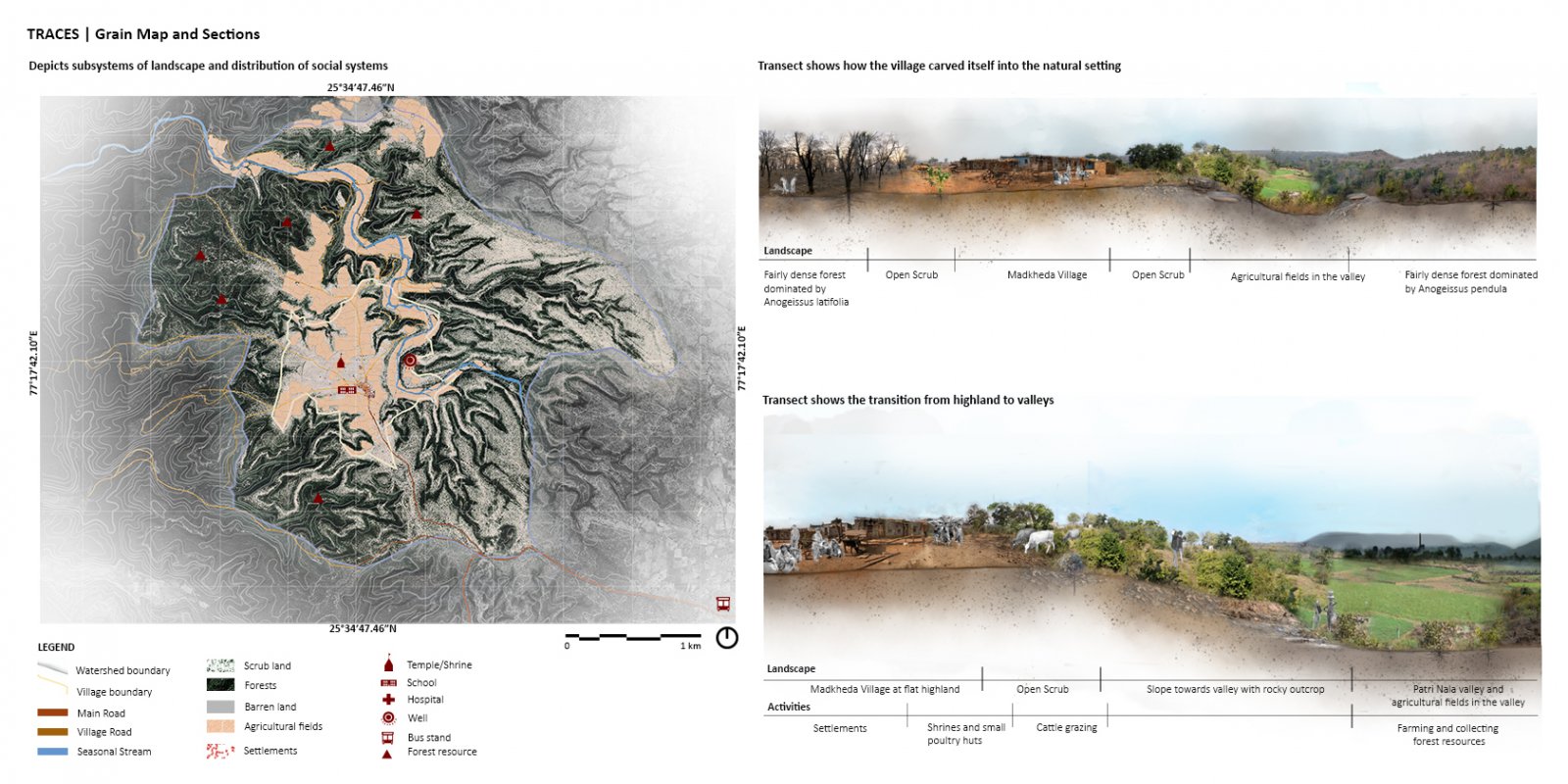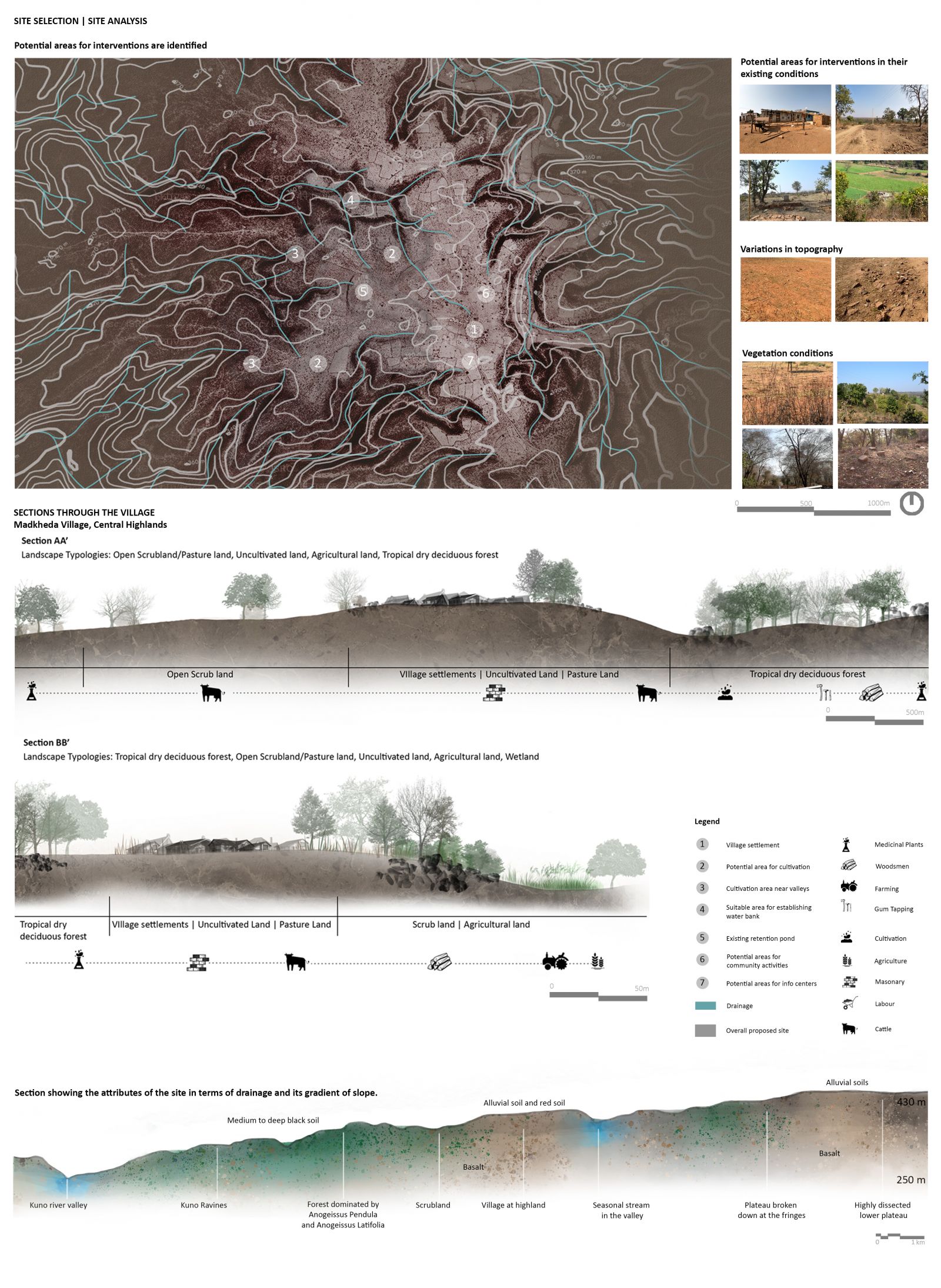- Student SELVEE PANDORIYA
- Code PLA20314
- Faculty Architecture
- Unit L4 Studio Unit
- Tutor/s Divya Shah
- TA Sankalpa Patel
Sahariya, which translates to ‘forest dwellers’, is the native community of the north-western Madhya Pradesh. Though as a part of Central Highlands for many centuries, Sahariyans are unacknowledged and unrecognized as an integral part of the society. Madkheda, a village near the Shivpuri plateau, is inhabited by Sahariyans encapsulated by forests of gum-bearing trees. Gum tapping has been a prime source of livelihood which is still followed among the Sahariyans. They have treasured the knowledge of sustainable and scientific methods of gum tapping for ages. But over time mass exploitation and pressurized market industries has rapidly shifted the purpose and pace of gum tapping. An indigenous practice regulated and sustained by culture and traditional wisdom had turned into a destructive practice. The ownership of gum tapping and its main economic benefits are being taken over by other external forces of political and industrial power. Consequently, the stress on the forest has increased and unsustainable activities have degraded them and the quality of gum procured. Reduction in forest cover, absence of control mechanisms from within the community, lack of ownership and opportunities, and misguided gum-tapping practices have led to irreversible negative changes to the landscape and the culture. Further, conservation laws and restrictions have severed the community from their forests. The project considers an element of culture as symbolic motivation. A niche called aala on the walls of the Sahariyan dwellings. Sehr is a community-based project intended to regenerate local forests around Madkheda through cultivation. Gum tapping practice as a base, it aims at providing this community with land for cultivating gum-bearing trees for yield. It programmatically intends to mend the gap between the produce and the market by providing a collective that helps to formalise direct benefits to the community. And community authorization, sense of ownership and strengthened economy as an output. Keeping this interwoven land-culture relationship as a tool, it symbolically considered niche called aala as its concept. This niche in many ways relates to the existing conditions of Madkheda and its forests. Considering the village as a niche in itself, the forests around the village illustratively symbolizes Mandana art that decorates the periphery of the niche. With time like the Mandana art that faded, the niche that got chipped and worn and the diya which lit it once missing, it’s a symbol that relates to the current state of Sahariyan existence. The project aspires rekindling this spirit and belongingness that the community has started to lose due to the present-day issues of survival and sustenance. The project inserts with an understanding of the topographical layer and cultural layer superimposed over time. It primarily considers three physical layers - hydrology, topography, and vegetation which is provided with associated interventions. These interventions are integrated to create a model for cultivated forest through the Agro-Silvi-Pastoral System at community level. It also attempts to acknowledge and formalise the TEK of the Sahariyans and envisions becoming a demonstrative system for other villages with similar socio-ecologic context.









